AP 250 to 241
Syriac East meets Latin West Part 1: Sambah Lesan and Kollan Dasne.
| Call Number | AP 241 |
| Part Number | Part I - Syro Malabar Church |
| Title | Syriac East meets Latin West Part 1: Sambah Lesan and Kollan Dasne. |
| Duration | 8:37 |
| Place of Recording | |
| Date of Recording | |
| Youtube URL | https://www.youtube.com/watch?v=yCWjAXKl-h8 |
| Video Segment (s) |
|
Notes
Syriac East meets Latin West Part 1: Sambah Lesan & Kollan Dasne
The evolution and musical aspects of Syriac Chants: Sambah Lasan ( Praise My Tongue) & Kollan Dasne (Let us all Offer). Excerpts from the Radio Vaticana Interview and Conversation between Dr. Joseph J. Palackal and Fr. William Nellikkal, broadcast on 8th and 9th of January, 2016. See full interview at Aramaic Project 58 A https://youtu.be/5MWHm09Pnfo
Note: This conversation on the Vatican Radio sheds light on the Portuguese (Latin) period in the history of the Syro Malabar Church, starting in the sixteenth century. The conversation is based on two Syriac chants that are translations of Latin chants. The Portuguese missionaries wanted the St. Thomas Christians to shed their Syriac heritage and adapt to the Roman Catholic customs and practices. The St. Thomas Christians, however, were not willing to compromise on their affinity toward the Syriac language. They held on to it as an honor and a privilege to preserve the mother tongue of Jesus. In due course, both parties compromised. The section of the St. Thomas Christians who accepted the ecclesiastical leadership of the missionary bishops adopted such Latin-rite rituals as Benediction of the Blessed Sacrament, Novena to saints, and litanies. Those who knew Latin and Syriac mediated the transition/translation of the text from Latin to Syriac. Instead of adopting the melodies of the source text, the local composers created new melodies to the translated text (see two examples in Aramaic Project 56 https://youtu.be/tQiwu_FF-sM and 56 A https://youtu.be/0UhiLbAaht4) . Thus, a large body of chants came into being in Kerala in the sixteenth and seventeenth centuries.
The conversation on the two Latin chants shows the intersection of music and history in the Christian context of Kerala. Whether we like it or not, these intersections did happen and cannot be erased from memory. It also is a historical witness to the audacity of the St. Thomas Christians to preserve the ancient language. They considered it sacred. In the twentieth century, however, that attitude changes. The Syro Malabar Church decided to give up the Syriac language independently without any coercion from the outsiders. The process started almost ten years before the Second Vatican Council. Ironically, the Syro Malabar Catholics set an example and precedence for the Latin rite. Such contradictions do happen in history. References: Aramaic Project-56. Johny P. David. https://youtu.be/tQiwu_FF-sM Aramaic Project-56 A Johny P. David plays Sambah Lesan on Saxaphone. https://youtu.be/0UhiLbAaht4 Title and end-credits music: Johny P. David
Joseph J. Palackal, CMI
New York
14 July 2021
- AP 244 - Syriac East Meets Latin West Part 2 Kyrie Eleison Bennedy and Pappootty.
Related Videos
- AP 5f - K. O. Chacko Koythadathil, sings "Śambah leśān" which is sung during the Eucharistic procession on Holy Thursday.
- AP 6f - Dr. Jacob Vellian and team sing "Śambah leśān" From Pange Lingua by St.Thomas Aquinas.
- AP 51a - "Śambah leśān" Syriac translation of Tantum Ergo by Thomas Aquinas.
- AP 56a - Johny P. David plays “Śambah leśān” on alto saxophone.
- AP 56b - Johny P. David plays “Śambah leśān” with instrumental accompaniment.
- AP 4t - Kollan daśnē [Let us all offer; Syriac of `Pange lingua' by St. Thomas Aquinas] Track 22 from Qambel Maran: Syriac Chants from South India
- AP 25o - Rev. Fr. Sebastian Sankoorikkal: Melody of “Kollan dasne.” Syriac translation of Tantum Ergo.
- AP 48a - Melody of "Kollan Dasne" (Pange Lingua). Ammini John Anamthuruthil.
- AP 51b - Melody of "Kollan Dasne" From Syriac Translation Of the Benediction hymn Tantum Ergo.
- AP 52b - A unique melody of "Kollan dasne."
- AP 56c - Johny P. David plays Kollan dašne with instrumental accompaniment.



